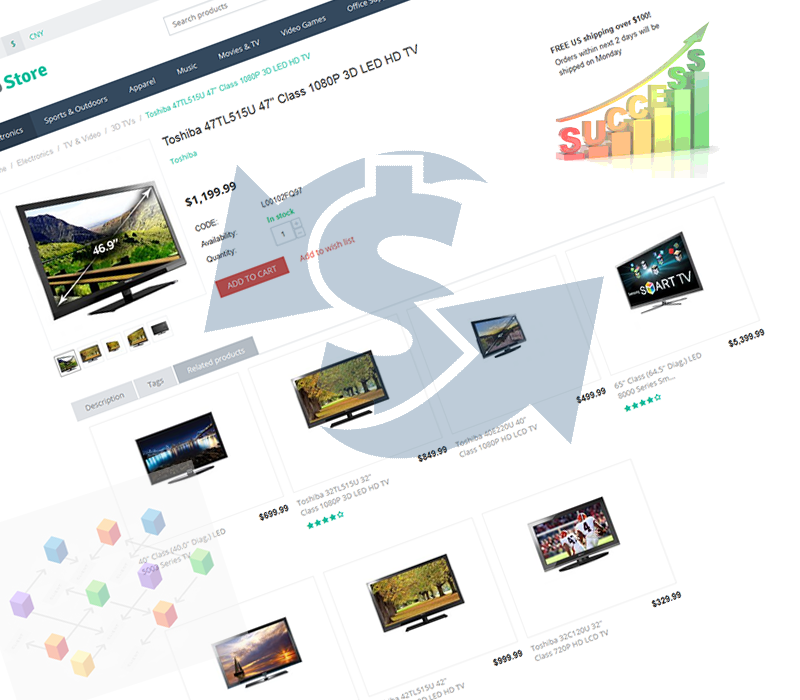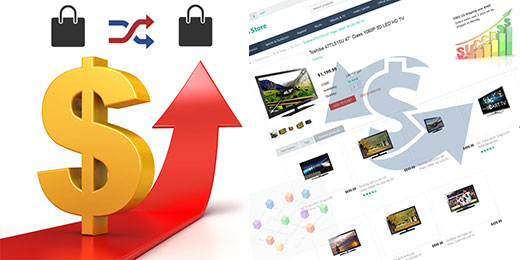Cross-Sells and Upsells: What is the Difference?


Suggestive Selling Basics
Suggestive selling generally involves three types: full line or add on selling, cross selling and upselling. While each type is unique, the general concept is the same. Salespeople want to increase the value of the solution for their buyers, which subsequently enhances the sale. Suggestive selling, when done correctly, comes across as a value-added, customer-friendly approach. When overly aggressive or manipulative it can put off customers.
Up-selling and cross-selling are two techniques that you can easily implement into your small business and if used effectively, they can make a big difference to your bottom line. Up-selling and cross-selling allow you to generate extra sales revenue by encouraging your existing customer base to purchase more or to make more frequent purchases.
Upselling
An up-sell occurs where a customer is ready to order a product, or has already made a purchase from you, when you immediately offer an upgrade or addition to the deal. The most common example of up-selling occurs in fast food restaurants, where the customer makes an order and the cashier asks "would you like to upsize that meal for just sixty cents extra?" In many cases, the customer says yes because they feel that they are getting a better deal, even though they are paying more.
The same principle can be applied to almost any selling situation. The crucial feature of an effective up-sell is being able to offer the customer some incentive to buy the upgrade now as opposed to later or not at all. There should be either a discount for purchasing the upgrade or a significant benefit to be gained by purchasing the upgraded product or service. However, avoid pressure selling an upgrade or you'll risk losing the sale altogether.
Cross-Selling
Cross-selling is a strategy that small/big businesses can use to encourage existing customers to purchase additional or complimentary products from your range. The cross-sale doubles the return that you generate from the customer. Consider the potential of being able to cross-sell to all of your customers.
One of the first to use cross-selling to enhance their services, retain customers, attract new customers and stay competitive is Amazon. If you purchase a certain type of product, whether it is a book or CD, you will see a notification either at check-out or via email, to tell you that other customers, who bought this product, also enjoyed this very similar product. As soon as you purchase a certain type of business book, you will be notified of other similar books that are available. Amazons cross-selling methods are highly effective and provide additional value to customers whilst at the same time, increasing the site’s sales volume.
Ebay is another on-line site that promotes cross-selling. For example, if you are selling bath towels and also have bathroom accessories in your Ebay store, it would be a natural fit for a cross-selling opportunity. It makes sense, because it doubles the revenue on what would have been a single sale.
Sales Tactics
There are many ways to approach cross-selling and upselling. The best tactics depend on your products and how you sell, such as through a retail store or online. For cross-selling, special packages supporting your main products allow your customers to get the extras they need at a special price. Upselling involves understanding the features of your more expensive products and how those features can be of greater benefit and value to the customer. Regular sales training of cross-selling and upselling tactics can pay off with higher sales revenues.
Win-Win Sales
Properly done, cross-selling and upselling should result in a win-win situation. Your business wins because you generated more sales revenue from the customer. The customer wins by making a purchase that is more useful or exciting. Take care that your cross and upsale tactics do not come across as pushy or an attempt to merely sell a more expensive product. Always be able to show how the products you or your staff are trying to sell provide real benefits to the customer.
Share
Comments
Article related products
Categories
Recent articles
Archives
You may be interested in


